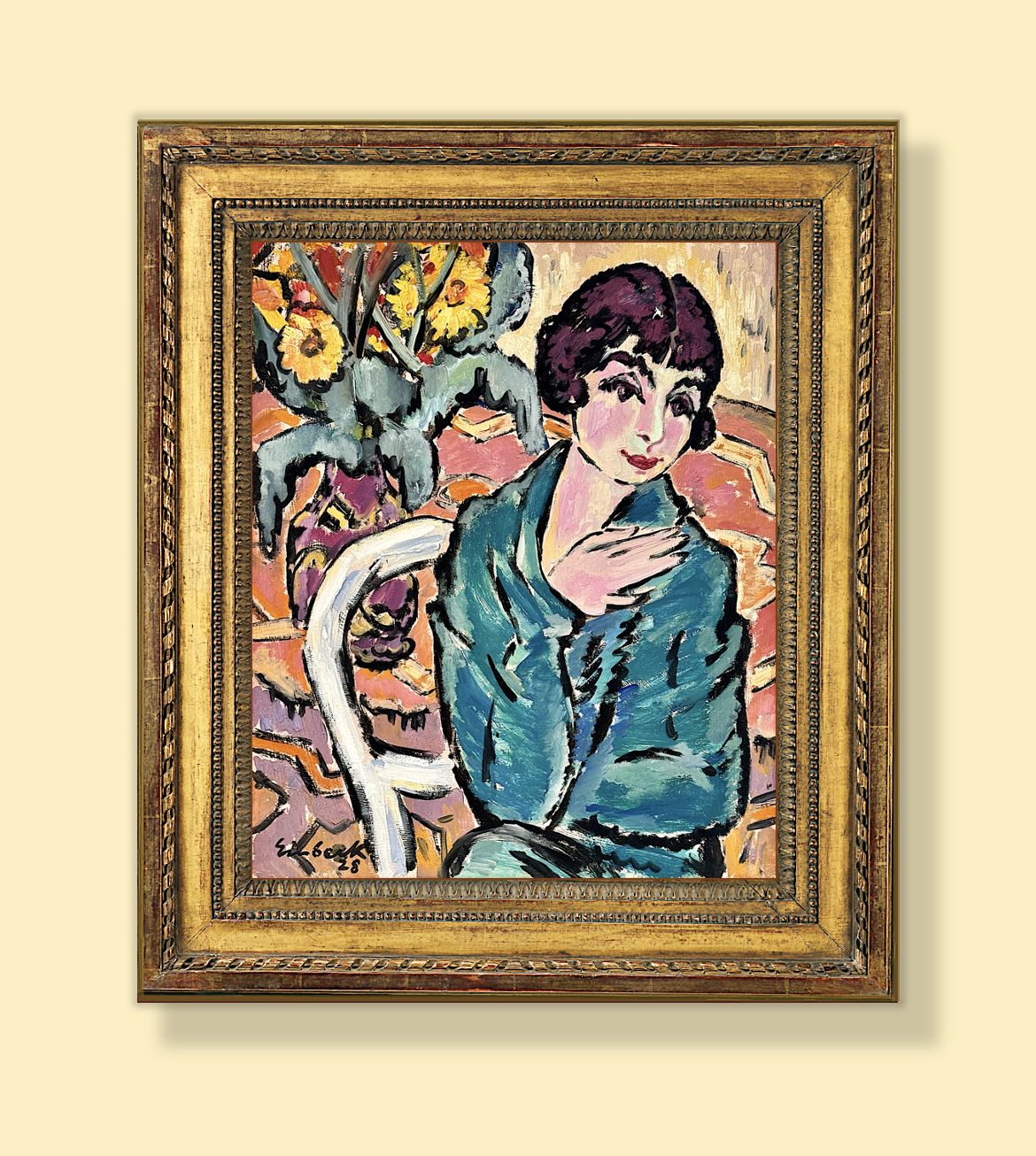

Title: Original Gouache Portrait Painting By Artist Georges Einbeck
Shipping: $29.00
Artist: N/A
Period: 20th Century
History: Art
Origin: Central Europe > France
Condition: N/A
Item Date: N/A
Item ID: 672
A fabulous original gouache on cardboard paper, mounted on academy board, by listed artist Georges Einbeck – a German-Polish artist. This beautiful Impressionist portrait painting, depicting a woman seated in her garden, was completed in 1928 and is an excellent example of the style of that period in art history. It is signed and dated in the lower left corner. The painting measures 26 x 21 ½ inches. This is a rare opportunity to purchase an Impressionist vintage painting at an affordable price. Georges Einbeck, born Georg Einbeck Golluschütz (1871-1951), was a student of Henri Matisse in Paris. This piece was recently removed from its frame for examination to assess its condition and authenticity. It comes from a private estate and is characteristic of the pastel colors favored by Impressionist artists of the time. The painting is in good, age-appropriate condition. There is some slight discoloration, with occasional minor flaking of paint within the image and along the lower margin. The original frame, which was damaged, has protected the painting, as it was stored behind glass for many years. Georges Einbeck’s work, influenced by Impressionism, was shaped by the artistic movements of his time, including Art Nouveau and Art Deco. He spent his winters in Mentone and his summers in Lucerne. Among other exhibitions, he participated in the Berlin Secession (1903-1907), exhibited at the Berlin Arthouse, and contributed to the art exhibition in Dresden and the German Artists' Association in Weimar (as referenced in Thieme-Becker and Vollmer). He was active in both Paris and Switzerland. The painting is signed and dated and is in good condition. Provenance: Private collection, United States. This early work still displays elements of the Impressionist, art Deco, and Art Nouveau style and is rarely available on the auction market. Paintings by Georges Einbeck have fetched up to €12,000 at international auctions. The painting offered here, created in 1928 by the German-Polish artist Georges Einbeck, exemplifies his distinctive style. The artist Georges Einbeck (1871-1951) was born in 1871 in the West Prussian town of Golluschütz (Goluszyce). After several trips to Paris, Einbeck began painting as a self-taught artist in 1897, later pursuing formal studies at the Academy of Arts in Munich, the École des Beaux-Arts, and the Académie de la Grande Chaumière in Paris. He also studied under Henri Matisse In the 1920s, Einbeck lived in Switzerland for some time. His early works display influences of the Art Nouveau style, while his later works show the impact of Expressionism, particularly the Fauvist movement.
Georges Einbeck (1871–1951) was a German-Polish artist, born in Golluschütz, West Prussia. He is best known for his paintings that transitioned from the Art Nouveau style to Fauvism, particularly during the later stages of his career. Einbeck’s artistic journey began after several trips to Paris, where he studied at prestigious institutions like the Academy of Arts in Munich, the École des Beaux Arts, and the Académie de la Grande Chaumière. He also had the opportunity to study with Henri Matisse, which significantly influenced his work. During the 1920s, Einbeck spent considerable time in Switzerland, which inspired some of his works. His early pieces are marked by the ornamental aesthetics typical of Art Nouveau, but as he matured as an artist, his style evolved towards the bold, expressive use of color characteristic of Fauvism and Expressionism. Einbeck exhibited widely, including at prominent events such as the Berlin Secession (1903-1907) and the Art Exhibition in Dresden. His works are recognized for their delicate use of pastel tones and occasionally appear at auction, fetching up to €12,000. Despite his talent, Einbeck remains somewhat underrepresented in major art histories but is recognized in collections like the Musée d’Orsay. If you’re looking for more in-depth details, institutions like the Musée d'Orsay and auction databases like askART contain additional information about his life and career.